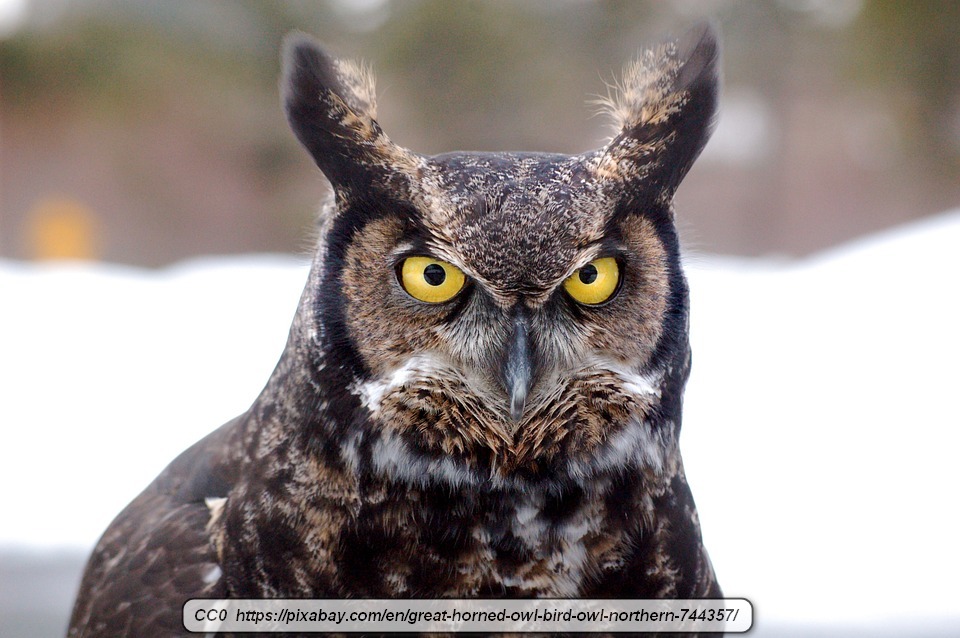The great horned owl, a denizen of the night, reigns supreme as an apex predator across a vast swathe of the Americas. These formidable birds, instantly recognizable by their prominent ear tufts (which, despite their appearance, have nothing to do with hearing), possess an array of adaptations that make them exceptionally effective hunters and survivors. Their nocturnal habits, powerful talons, and cryptic plumage allow them to thrive in a diverse range of habitats, from dense forests to arid deserts. Unraveling the mysteries of these avian predators reveals a fascinating glimpse into the intricacies of the natural world.
Let us embark on a journey of discovery, presenting ten compelling facts that shed light on the remarkable life history and ecological importance of the great horned owl.
1. Ubiquitous Distribution: A Master of Adaptation
Unlike many specialized species restricted to narrow geographic ranges, the great horned owl exhibits remarkable adaptability, inhabiting a remarkably diverse array of ecosystems. Its range extends from the subarctic regions of North America down through Central and South America. This adaptability allows it to flourish in deciduous and coniferous forests, grasslands, deserts, swamps, and even urban environments, providing there is sufficient prey and nesting sites available. It is a truly cosmopolitan species, a testament to its evolutionary prowess.
2. Silent Flight: A Stealth Hunter
The great horned owl is renowned for its near-silent flight, a crucial adaptation for ambushing unsuspecting prey. This stealth is achieved through specialized feathers with comb-like fringes on their leading edges. These fringes disrupt the flow of air, minimizing turbulence and reducing the whooshing sound typically associated with avian flight. This allows the owl to approach its quarry undetected, maximizing its chances of a successful capture.
3. Diverse Diet: An Opportunistic Carnivore
A dietary generalist, the great horned owl boasts an incredibly diverse menu, consuming a wide range of prey items depending on availability. Small mammals, such as rodents, rabbits, and squirrels, constitute the bulk of its diet. However, it is also known to prey on birds (including other owls), reptiles, amphibians, fish, and even insects. This opportunistic feeding behavior enables it to thrive in environments with fluctuating prey populations.
4. Powerful Talons: A Deadly Grip
Equipped with exceptionally powerful talons, the great horned owl is capable of exerting immense crushing force. These talons, coupled with sharp, curved claws, allow it to grasp and subdue prey much larger than itself. The grip strength of a great horned owl can exceed 300 pounds per square inch, more than enough to quickly dispatch even formidable prey items. They are truly masters of avian predation.
5. Asymmetrical Ears: Pinpointing Prey in Darkness
While the “horns” are merely tufts of feathers, the great horned owl possesses another remarkable adaptation for nocturnal hunting: asymmetrical ears. These ears are positioned at slightly different heights on the owl’s head. This allows the owl to perceive subtle differences in the timing and intensity of sounds emanating from different locations. The auditory cues are then translated into a three-dimensional map of its surroundings, enabling it to pinpoint the precise location of prey, even in complete darkness. It’s an auditory triangulation system honed by millennia of evolution.
6. Nest Usurpers: Repurposing Existing Structures
Great horned owls are not particularly adept at building their own nests. Instead, they typically commandeer existing structures, such as abandoned hawk nests, squirrel dreys, or even cavities in trees or cliffs. This behavior reduces the energy expenditure associated with nest construction, allowing them to focus on hunting and reproduction. This opportunistic nesting strategy contributes to their success in a wide variety of habitats.
7. Early Breeders: Braving the Winter Chill
Unlike many birds that breed in the spring or summer, great horned owls are early breeders, often initiating nesting activity as early as January or February, even in regions with harsh winter conditions. This early breeding season allows the young owls to mature and disperse before the onset of winter, increasing their chances of survival. It is a risky strategy but allows for the fledglings to have a longer period to learn hunting skills.
8. Parental Care: A Dedicated Investment
Both male and female great horned owls participate in parental care, diligently incubating the eggs and providing food for the young owlets. The female typically incubates the eggs for approximately 30-37 days, while the male hunts and provides food for her. Once the owlets hatch, both parents share the responsibility of feeding and protecting them until they fledge, or leave the nest.
9. Barred Owl Mimicry: Vocal Deception
Great horned owls are known to occasionally mimic the calls of barred owls. The exact purpose of this mimicry is not fully understood, but it is hypothesized that it may be used to attract barred owls into their territory, either for territorial defense or even as potential prey. This vocal deception highlights the complex and often surprising behaviors exhibited by these intelligent predators.
10. Longevity: Enduring Through the Years
In the wild, great horned owls can live for over 20 years, although the average lifespan is likely shorter due to various factors such as predation, disease, and habitat loss. In captivity, they can live even longer, with some individuals exceeding 30 years. Their longevity is a testament to their resilience and adaptability, allowing them to play a significant role in their ecosystems for many years.
